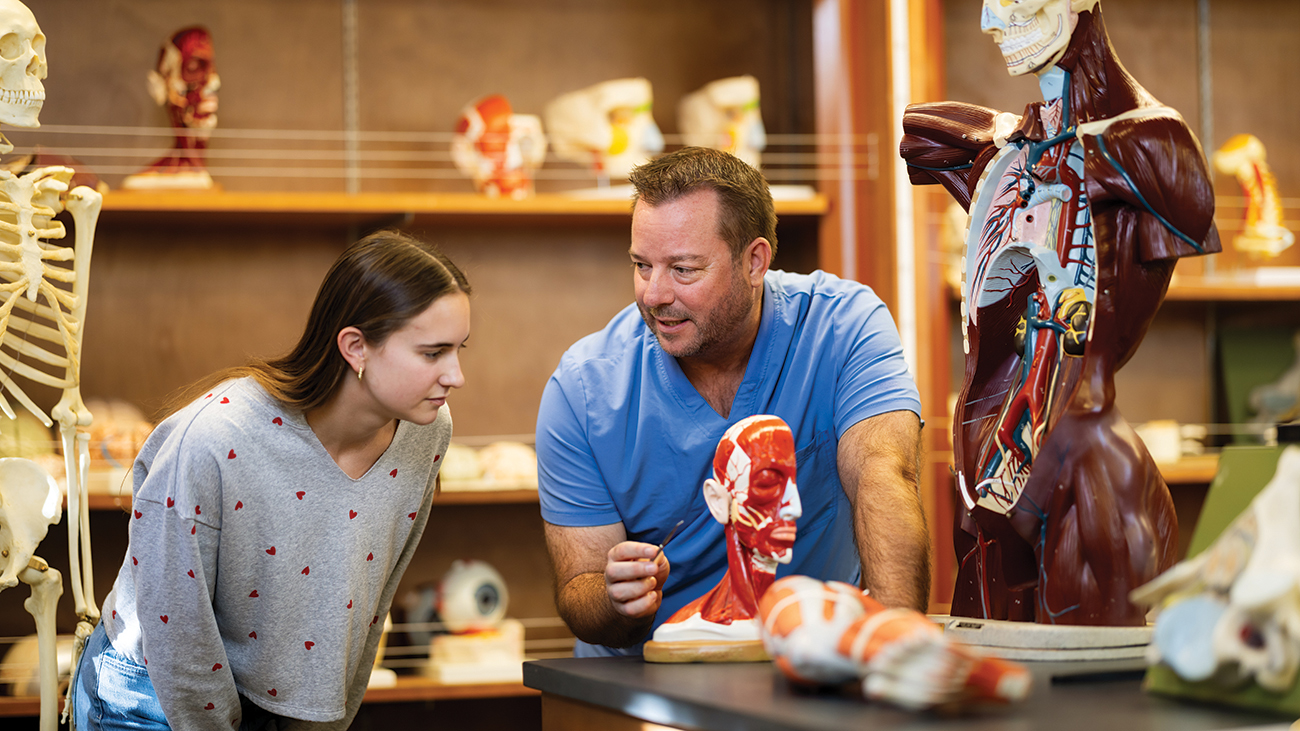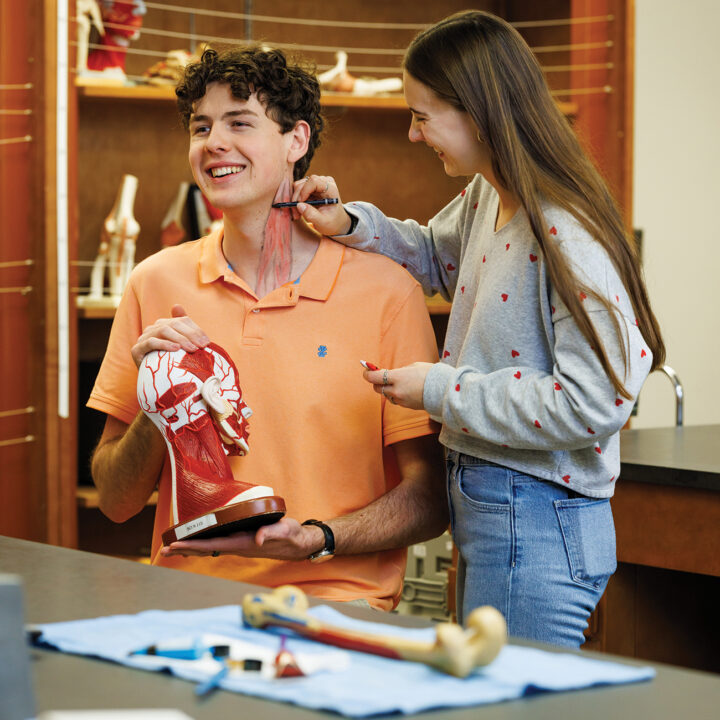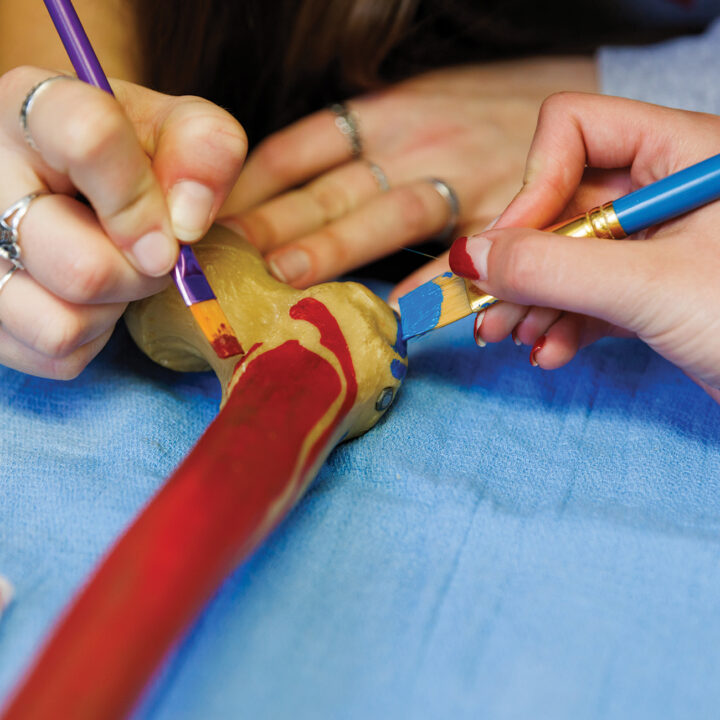Body Art
A new student club explores the intersection of art and anatomy to give students a better understanding of how the human body works.

After taking courses in Cal Poly’s Human Anatomy Laboratory, where biology students study the human body by working with cadavers, kinesiology and public health major Emma Mason found herself captivated and seeking more ways to explore the subject. She asked her instructor, biological sciences lecturer Michael Jones, about any anatomy clubs that she could join. He suggested that Mason start one.
Mason ran with the idea, and the new Creative Anatomy Club (CAC) was born in winter quarter.
The group is open to students of any major, serving as “a space for students to collaborate on art projects and facilitate open conversation about their relevant studies,” said Mason, a third-year student from Mission Viejo, California.
“A huge goal for me is making it an inclusive space where everyone can come and enjoy it,” Mason said.
“Students don’t have to necessarily want to be a doctor or be interested in the nitty-gritty of biology, but the human body is so interesting and unique. I think everyone can benefit from a better understanding of how our bodies work.”
Jones, who is now the club’s advisor, likes to include an anatomical art image at the start of his lectures to promote the work of medical illustrators, a possible career. Many schools with top medical programs, including Stanford University, already offer anatomical art classes.
We’re not focused on any one medium of art. I think we’re truly being creative.
In the club’s meetings, students discuss anatomical renderings that include close-ups of shoulder ligaments, or photography that creatively showcases the human form. Jones likes to share an aerial image in which a large group of people huddle together to form a visual representation of the human brain.
“We’re not focused on any one medium of art,” said Jones. “I think we’re truly being creative.”
The club invites guest speakers to talk about the relationship between health and art. In February, CAC hosted published cartoonist and Cal Poly biological sciences professor Ed Himelblau, whose work has been published in The New Yorker and on his popular “Himelblog” Instagram account.
“Dr. Himelblau walked us through one of his art pieces,” Mason said. “He showed some of his sample work and we all had some snacks and an awesome social event.”
At club meetings, members introduce ideas and hold engaging conversations around anatomy.
“My favorite thing about being part of the CAC is the low-pressure environment they’ve created in which I can explore my passions with like-minded people,” said Tyne Riccabona, a public health major. “I have found myself feeling much less stressed and more engaged when I’m in this social space.”


Club member Dhruv Patel, a biomedical engineering major, said the club is passionate about bridging the realms of biological study and creative expression “to showcase our talents as researchers and artists, to create beautiful art that displays our passion for learning.”
“Through this club, we hope to explore the various ways we can study the beauty of our biological systems using artistic perspectives, as well as reinforce our knowledge by creating art,” Patel said.
Mason said the club will continue to brainstorm how to use art to gain anatomical understanding.
Looking ahead, she hopes to begin a campuswide anatomically focused art project, such as a mural or a chalk art festival, which would increase the club’s visibility on campus.
“We’ll continue to provide an open collaborative space for our members to engage with one another and create some inspiring pieces,” Mason said.


